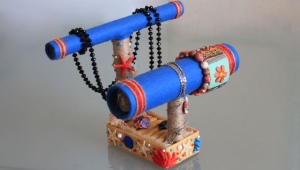Paracord bracelet

Experienced tourists know how to use a minimum of things in a variety of conditions. This is a very useful skill, because this way you can save space, effort and time for training. Therefore, do not be surprised by bracelets and braided details in their wardrobe - this is not a whim and not a tribute to fashion, but a very useful thing - paracord bracelets and braids.
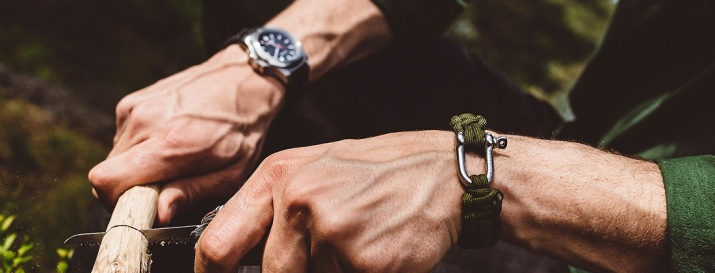
What it is
The paracord bracelet is woven by hand from a special elastic cord. If necessary, you unwind it, and at your disposal is about 4 m of the strongest rope. For survival in extreme and difficult conditions (mountaineering, fishing, hunting, hiking), this is enough.


The peculiarity of weaving is that it can be quickly untwisted thanks to specific fasteners when the product is made without fastex. But the well-known and familiar fastener has its own characteristics:
- Fastex helps to create weaving and fixes the rope;
- If you need to unwind the cord, the quickest way is to break the buckle.
Thus, fastex bracelets can be considered disposable.
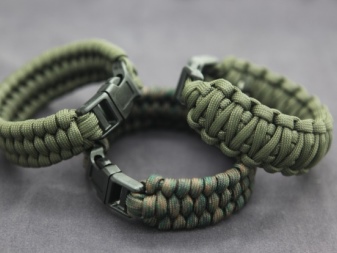
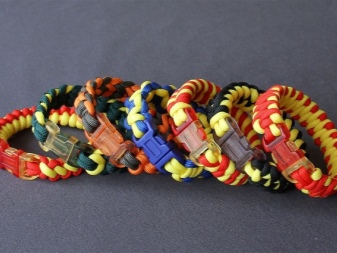
myths
Survival and military tactical games are always at the limit of human capabilities. If you have watched issues about survival instructors, then you know that it is extremely difficult for a person to live independently in uninhabited places for several days (not like weeks and months).

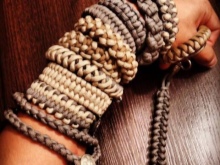

But some want to test their strength and deliberately go away from a comfortable life. For some, this is part of a hobby, work and profession, while someone finds themselves in a difficult situation involuntarily.
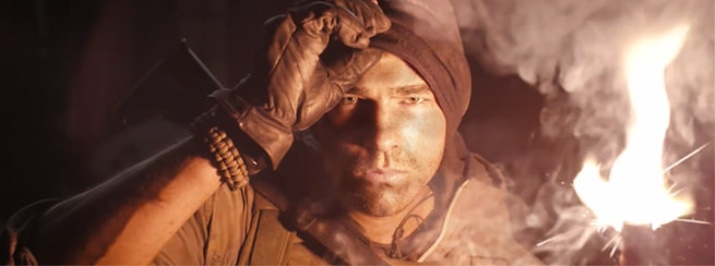
What helps in uncomfortable conditions? Unpretentiousness, physical hardening and endurance, ingenuity and versatility of improvised means. The last one is about paracord. Initially, it was used to equip parachutes and landing. Strong thin ropes were useful to the military, so they managed to save the cords, and at their leisure entertained themselves with weaving knots.

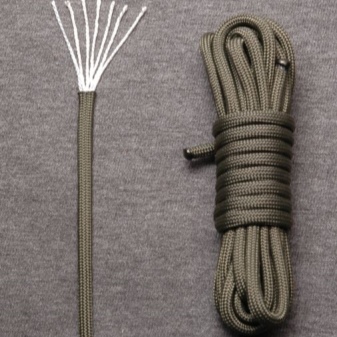
Either practicality or sentimentality suggested to one of the guys what the cord is suitable for - for a bracelet. It can not only be quickly weaved, but also untangled if necessary. So the appearance of paracord in the form of an accessory on the arm became justified and understandable. And today it is a landmark detail, according to the design and appearance of which one can draw certain conclusions about its owner.
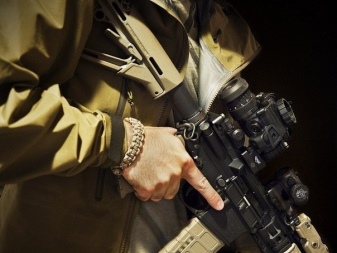
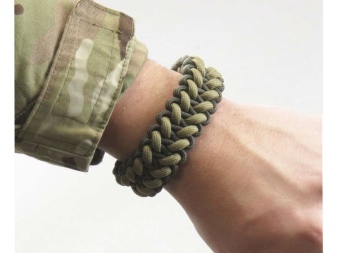
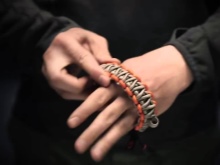
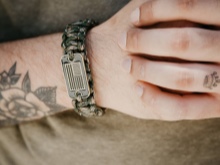

Strength of mind is what helps in difficult conditions, and various cunning and thoughtful gadgets greatly simplify survival. And they do not always have to be smart and technical, sometimes they are very simple and unpretentious little things - a quickly unraveling bracelet, for example. The absence of complex elements greatly simplifies such devices and makes them as convenient as possible. Even in ordinary life, they sometimes find use if you find yourself in temporary isolation.


Compound
Paracord is a cord made of polymer heavy-duty fiber (the first samples were made of nylon), similar to those used to create parachute materials and are able to withstand huge loads and weight.This is achieved not only by the composition, but also by the fastening: there are several dense threads inside the cord, a thin colored braid is superimposed on top of them. This increases strength and wear resistance.
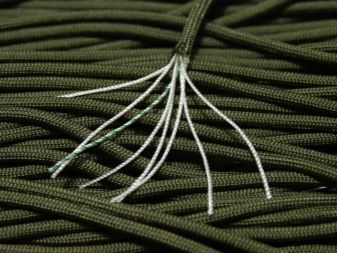
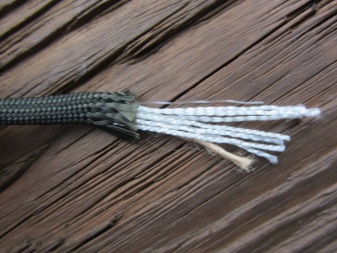
It is believed that the best ropes of this type are produced by the American military industry, and more affordable and cheaper analogues can be found on Chinese sites.
By and large, it is important not where they are produced, what the fiber consists of, but tensile strength. This is an indicator of the maximum load for the thread. Depending on the category of paracord, the numbers differ. Most often, Chinese products withstand 100 kg, for paracord of the third degree, a value of 250 kg is indicated. Those. it depends on whether only 1 person can stay on the rope or with an additional load.
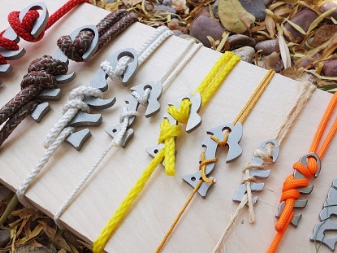

What is it for?
Here, it would seem, you are going on a hike - take a coil of rope. Experienced hikers do this. However, in normal life, a spare cord will cause a lot of questions and surprise. On the other hand, it is precisely this forethought that helps us out in unforeseen situations, when all the ropes are used for their intended purpose. For example, if you provide first aid and apply a tourniquet. Or during a fire, do not jump from the height of the third floor for good luck, but deftly untie the bracelet and use the rope (products with large reserves of length - up to 10 m will help out here).
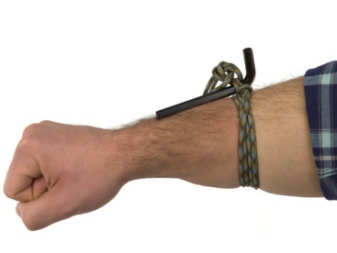
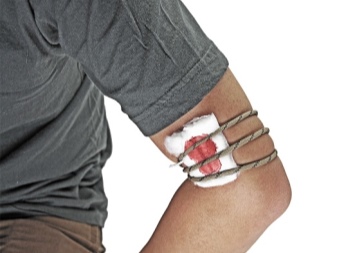
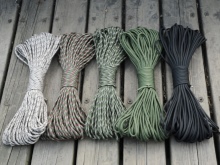
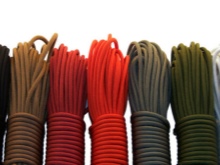

Therefore, the paracord bracelet is included in the protective kit for every day - EDC (everyday carry). It does not require a separate place, it is lightweight and can be used as a regular accessory. Due to the bright (or muted) color, it is perceived as part of the style, without causing unnecessary and uncomfortable questions. And it’s also hard to forget, the cord is always at hand. In general, an indispensable and inconspicuous little thing!
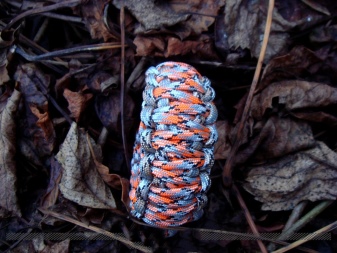
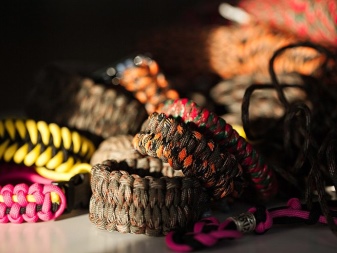
Kinds
The essence of the EDC bracelet is almost the same. The difference is in weaving and fittings - they can add new functionality. Due to the voluminous or complex knot in wide bracelets, you can additionally hide some more usefulness or use meters of rope. Therefore, most often they offer to purchase such paracords:
- snake - one of the basic weaves, quite simple and effective.
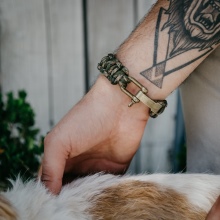


- Cobra - This is a wider option, it is often made two-color, which enhances the resemblance to a particular animal. Knitting can be voluminous (like a rope), flat and wide. Patterns for paracord rarely have their own developments, they are borrowed from ordinary needlework, taking into account the necessary qualities.

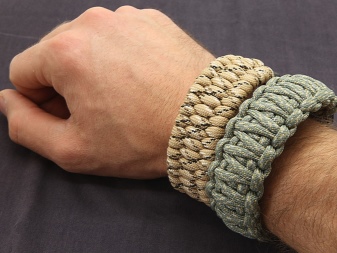

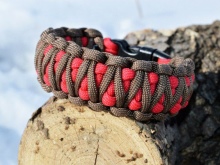

Usually the length of the bracelet matches the circumference of the arm, the clasps make it easy to put on the paracord. But sometimes it is knitted without fasteners at all. Some weaves allow it to change length more easily. Others, on the contrary, fix the size more rigidly. A stretch bracelet is considered more convenient and versatile. Its advantage is the absence of the usual fasteners - with a narrow hand, this is not always convenient. Some people rub their buckles, while others can be allergic to metal.
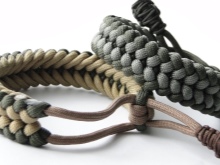

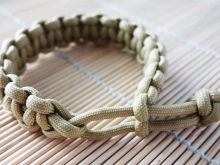
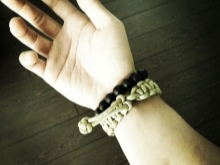

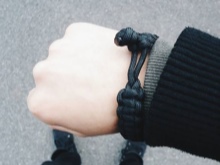
- with anchor - this is the designation of the fastener, visually very similar to a real anchor. It has 2 holes, it is convenient to thread the base loops through them, and the hook catches the free end of the bracelet. Such a bracelet can be called quickly unraveling. A decorative buckle is not always an anchor, it can be made in the form of Thor's hammer or look like an elven element, so paracord bracelets are often chosen as an accessory by Tolkienists and fans of northern European mythology. Moreover, the knitting looks quite impressive and original.
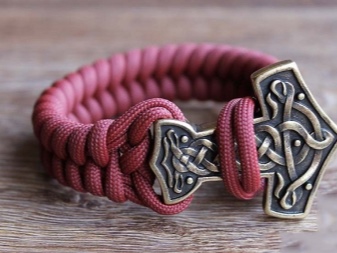

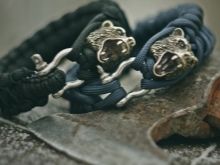

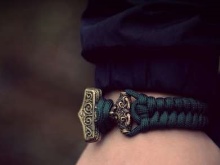
- Multifunctional bracelets ("5-in-1", "3-in-1", etc.) are most often referred to as tactical, military or professional. The peculiarity is the choice of color and voluminous (usually double) weaving, when the bracelet comes out so wide that it can be folded in half and something hidden inside (options with flint, rings, carabiner, bolts, nuts are popular). Or initially it is knitted with a kind of pipe. Of course, the length of the paracord in such a product will be longer than the standard one, and this is also an advantage.


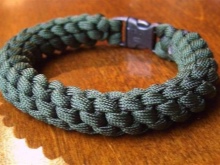
- Women's bracelet options also exist. They have more beauty and brightness. Sometimes for girls they are made with beads, strung on a rope during weaving. So the drawing becomes more interesting and elegant. But such products have little to do with survival itself, except for the material and whether it will be quickly untied if necessary.

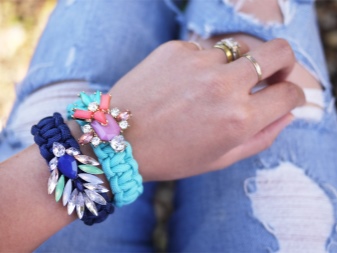
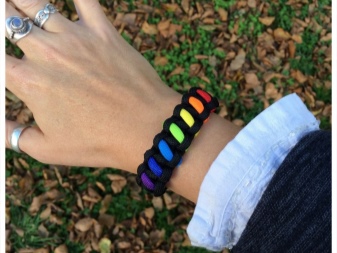

- And here's the reverse - for boyswhen a bracelet with nuts is woven instead of beads. Such an accessory turns out to be brutal and technical. If a guy is a technician, mechanic, locksmith, then he will be pleased to receive such a multifunctional gift.
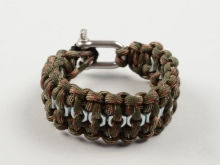


Colors and decor
The pattern may also depend on whether a single or double thread is used when weaving. You can use more ropes. But then the length of each will be small, and it will be difficult to quickly unravel it. Therefore, those paracords are most often used, where 1 or 2 ropes are involved.
If we are talking about more decorative than practical, then three-color, four-color, etc. options are possible. So that the ends do not stick out and do not fall apart, they are soldered, slightly melted. The correct paracord does not burn, so there is no need to be afraid of such manipulations.

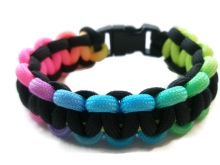
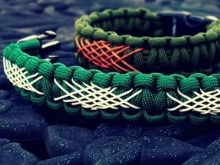
Even two-color options turn out to be very elegant if you use bright and contrasting colors of the rope (blue and yellow, red and green).Iconic and national combinations are very popular (St. George ribbon, tricolor colors, etc.).
But young guys love complex drawings and elements - with skulls, flowers, anchors. When it is technically not possible to make a pattern by weaving, then decorative beads of a specific shape are used, stringing them on a cord or weaving them into a bracelet. These are more often bought than weaved on their own, since this requires more experience and needlework skills.


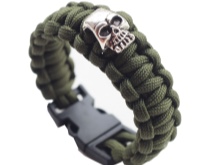
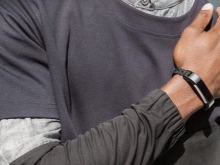

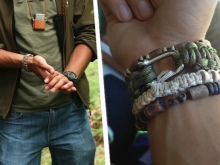
Handmade
The peculiarity of paracord bracelets is always handmade. Of course, you can order on specialized sites (then you will find various bonuses, multifunctionality, etc.). but if you want to present an unusual gift or know a little about what macrame is, then spend a couple of evenings learning how to knit an accessory. It will be a fun and educational experience!
For training, any long cord (3.5-6 m) or a clothesline, a clip (medical is ideal), a lighter to melt the cord can be suitable. But for a quality bracelet, you should look for the original paracord rope - you won't regret it! Think over the clasp and purchase accessories in advance - fastex, anchor, etc. Depending on the clasp and knitting method, the bracelet will have its own weaving features.

For example, if we weave the simplest option, then a measurement is used as the length of the bracelet - the girth of the wrist. Experienced knitters can work exclusively with their hands, but for beginners it is better to make the task easier and weave a bracelet using a blank - a rail or a plank into which pins or nails are driven in at a distance of a length. There are 2 nails on one end, and 1 on the other. These pins will play the role of clamps and make knitting much easier.If we weave a fastex bracelet, then one part of the fastener can be used for fixing instead of 2 nails.



You can use different schemes, but first try to weave a snake. In addition to the base cord, you will need a cord for the braid itself. Measure its middle and place the base under the thread, stretched on the workpiece under the buckle or on top (in this case, the base consists of 4 vertical lines). We wrap the left end of the paracord over the outer edge over the first and second verticals, and the right end is mirrored over the fourth and third so that its part is above the left end.


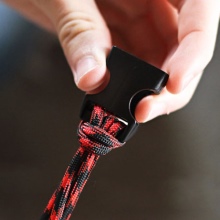



Now these parts are "swapped" and we repeat everything again, passing the cords around the two vertical bases. In this case, the paracord is intertwined in the middle, between the second and third warp threads. It turns out pretty quickly and neatly.
The clasp is the second most difficult moment. If you weave without fasteners, then the resulting ends must be brought together and braided into a diamond knot (diamond, diamond). First you need to pass the thread through impromptu loops at the beginning of the bracelet, if it is stretchy, since the knot turns out to be voluminous. We melt the end of the rope so that the threads do not unravel.
If we use fasteners, then initially we hid 2 loops (put them in fastex or anchor holes), fixing them. We fix the free ends with the second part of the fastex. It will be more difficult with a decorative buckle - we burn the ends on the back of the bracelet so that they do not catch the eye, leaving the lower edge of the loop free. We put the bracelet on our hand and fasten this loop with a clasp. Your bracelet is ready!

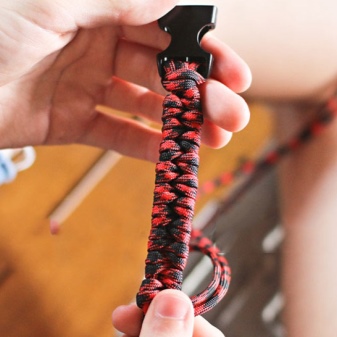
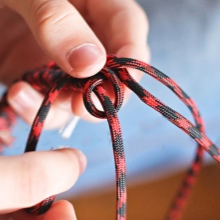

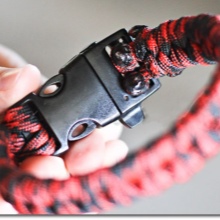
You can weave a snake with one thread without accessories.Then first weave a diamond knot, leave a small gap of a couple of millimeters and fold it with an accordion like the letter W, as high as the length of the bracelet. We gently pass the free end of the cord from below towards the knot, and then we bring it up through the side, tightly covering the right half of the "accordion", we wind it under the left side and bring it out through the side, bend it to the right and in the middle again we go down already under the right part. And so on until the very end.
To complete such a bracelet, you need to pass the paracord through the free loops from the accordion. We fix it with a simple but strong knot on the extreme loop. The free end is trimmed and melted. The bracelet is done! Now you can master other schemes, since the principle itself is clear to you.
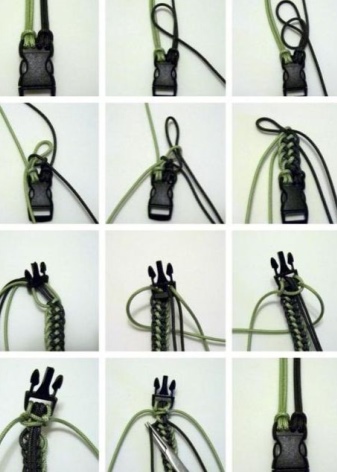

Having mastered knitting, you can practice unraveling the paracord. Such skills help out in extreme conditions - perfected movements save invaluable time, fingers tremble less and get confused. When the extreme is controlled and your life does not depend on some trifles, this is wonderful. But if this happens, then the knowledge and skills of survival will help you, and this is what a paracord bracelet is for, to quickly unwind if necessary.
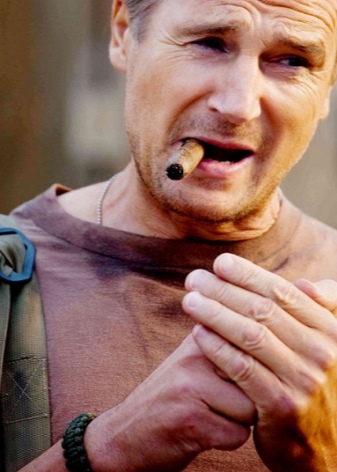

How to weave a snake bracelet - in the next video.






















